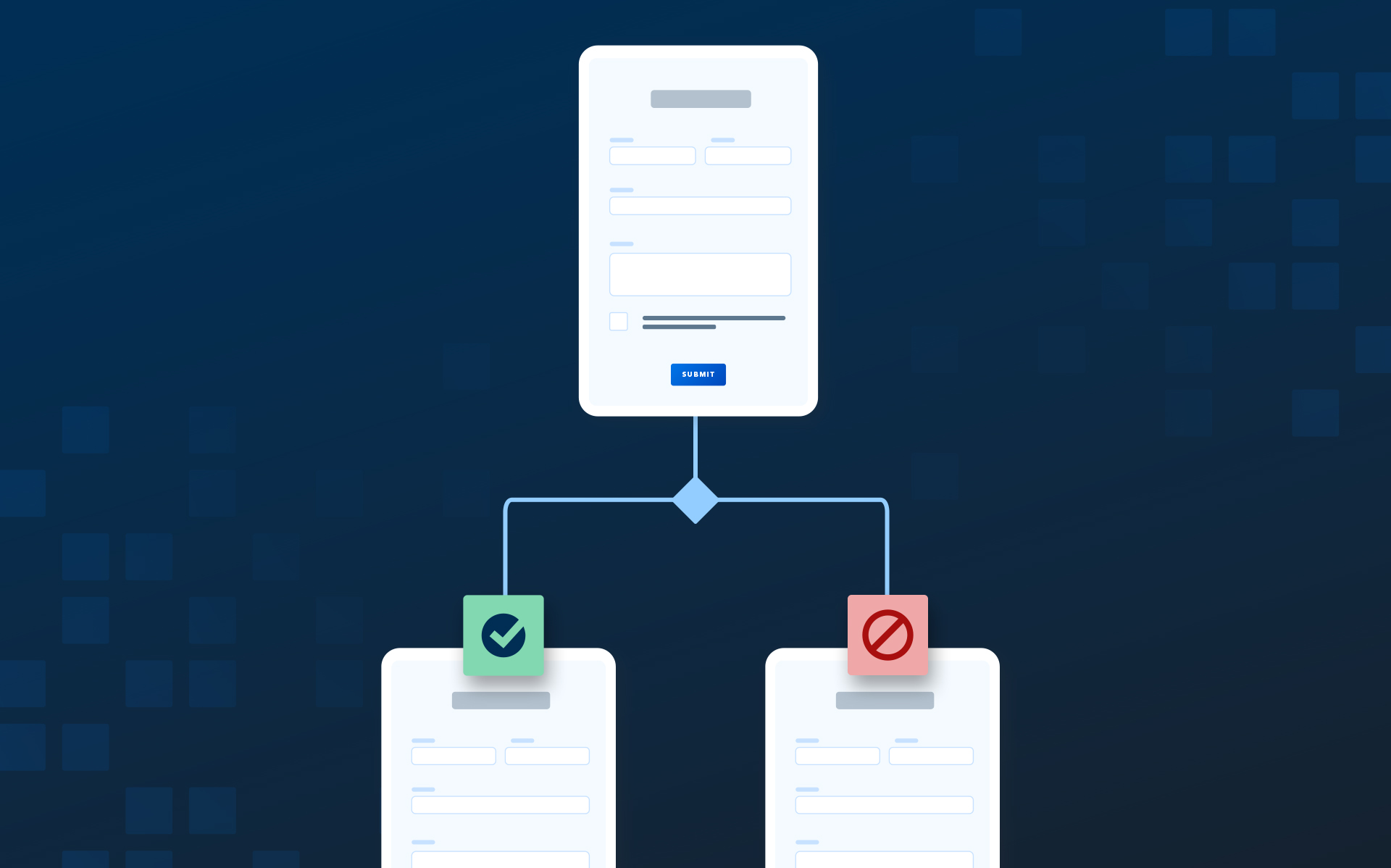A multi step form has potentially dozens of form fields ranging from basic contact information to work or education history. But not all these fields will be relevant for every respondent. And making a user scroll through an endless list of unnecessary fields will quickly cause frustration. It also increases the chances of form abandonment. Thankfully, providing a seamless and efficient form-filling experience is easy if you incorporate one specific feature — conditional logic. When used strategically, conditional logic can make a long, daunting multi step form feel more manageable for respondents.
Conditional logic is a multi step form best practice that provides a more dynamic and personalized experience for users. Your respondents will be more likely to complete and submit your form, and you will be more likely to collect high-quality data. It’s a win-win.
The foundation: understanding conditional logic in multi step forms
If you’ve ever filled out an online form that only shows additional fields if you make a specific selection (on a drop-down menu, for example), then you have experienced the power of conditional logic.
Conditional logic follows an if-then formula: If a user completes a certain action, then another step is triggered. Much like a “choose your own adventure,” conditional logic takes a user down different paths depending on the choices you select when filling out a form.
Conditional logic can provide a respondent with just the right amount of fields and questions to capture quality data without causing overwhelm. Using conditional logic within a complex, multi step form has many benefits, including:
Prevent information overload: By showing only relevant fields, conditional logic reduces the clutter and makes forms more manageable.
Improve UX: It ensures users navigate through the form more smoothly, focusing only on what’s pertinent to them.
Drive data quality: By minimizing irrelevant questions, you collect more accurate and valuable data.
Optimize for mobile users: It’s crucial for mobile responsiveness, as it minimizes scrolling and focuses on essential fields first.
Streamlining user journeys with progressive disclosure
Progressive disclosure is a term that means designing from simple to complex to create a more logical and natural user experience. This can apply to any type of design, including designing your multi step form.
You can apply this technique with conditional logic by revealing questions in a form based on a user’s previous response. For example, instead of creating a complex job application with an exhaustive list of form fields for education and work history, you can use conditional logic to only display one section at a time.
If a respondent only has one previous job, they will only see one set of work experience fields. A respondent can select an “add more work experience” button to trigger a new set of fields, and so on. Another example is providing a respondent an option to add more contact information if their billing address is different from their shipping address.
Examples of conditional logic in different web forms
Grant application form
Scenario: A government agency is accepting applications for a grant program. The form requires details about the applicant’s business, financial information, and intended use of the grant.
- Conditional logic application:
- Dynamic field display: Depending on the type of business selected (e.g., sole proprietorship, corporation), different sets of financial documentation fields are displayed.
- Question branching: If the applicant indicates specific business expenses (e.g., equipment purchase, marketing), additional fields related to those expenses appear.
College application form
Scenario: A college application form requires students to provide personal information, academic history, and extracurricular activities.
- Conditional logic application:
- Academic history: Depending on whether the applicant indicates they have completed high school or are still in high school, different sets of academic history fields (e.g., GPA, SAT/ACT scores) are displayed.
- Extracurricular activities: If the applicant selects specific activities (e.g., sports, community service), additional fields for details about those activities appear.
Employee onboarding form
Scenario: A company is streamlining its employee onboarding process with a digital form. The form collects personal details, employment history, and benefits selection.
- Conditional logic application:
- Benefits enrollment: Depending on the employee’s selection of health insurance coverage (e.g., individual, family), additional fields related to dependents and coverage details appear.
- Emergency contact information: If the employee indicates they have an emergency contact, an option to add information for their emergency contact dynamically appears.
Mortgage application form
Scenario: A bank’s mortgage application form requires detailed financial information from applicants seeking to secure a home loan.
- Conditional logic application:
- Income verification: Depending on whether the applicant is employed or self-employed, different sets of income verification documents (e.g., pay stubs, tax returns) are requested.
- Property details: If the applicant indicates they are purchasing a property versus refinancing, additional fields related to property purchase details (e.g., purchase price, down payment amount) appear.
- Credit history: Based on the applicant’s initial credit score range selection, additional questions about credit history and outstanding debts may appear to gather more specific information.
Start building personalized user experiences with your forms
Conditional logic on forms is an ideal way to provide a great user experience for respondents filling out your multi step form. By adding conditional steps to your form, you can increase engagement, reduce bad data, avoid errors, and increase form conversion rates.
Start building your best multi step forms by applying these conditional processing best practices!
Interested in learning more about multi step form best practices? Be sure to register for our webinar, From Concept to Creation: Complex and Versatile Forms.



